Hi there, pet lovers! 🦎
Are you considering adding a fiery and fascinating lizard to your collection? The Fire Skink might be the perfect choice for you. With their stunning coloration and lively personalities, these little lizards can bring a vibrant spark to any reptile enthusiast’s home. Let’s explore why Fire Skinks are so special and see if they’re the right pet for you!
Overview
Fire Skinks (Lepidothyris fernandi) are one of the most visually striking and engaging lizards you can add to your reptile collection. Known for their fiery orange and black coloration, these small, burrowing skinks are native to the forests of West Africa. They are hardy, relatively easy to care for, and have lively personalities that make them a favorite among reptile enthusiasts. Whether you’re a beginner or an experienced keeper, Fire Skinks offer a unique and rewarding pet experience.
Here’s a quick summary of what makes Fire Skinks stand out:
- Handling and Temperament: Quick and energetic, but can become calm with regular handling.
- Care and Maintenance: Moderate care requirements, with a focus on humidity, burrowing, and diet.
- Health and Durability: Hardy and resilient, especially when captive-bred.
- Availability: Moderately available, with captive-bred options becoming more common.
- Cost: Affordable to purchase, with moderate setup costs.
Overall: Fire Skinks are a fantastic choice for those looking for a small, active, and visually stunning reptile pet. Their unique behaviors and manageable care requirements make them a great addition to any reptile-loving household.
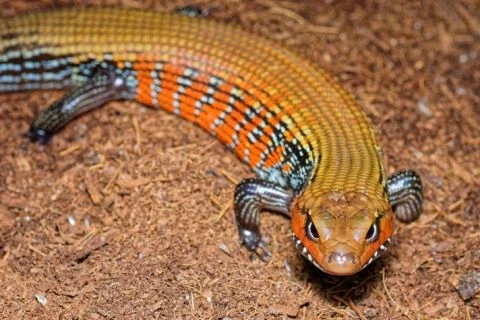
Why Choose a Fire Skink?
Fire Skinks are ideal for reptile enthusiasts who want a pet that is both visually stunning and interactive. Their vibrant colors, active nature, and relatively simple care requirements make them a standout choice. They are small enough to fit comfortably in most homes, yet their lively personalities and burrowing behaviors provide endless entertainment. With proper care, Fire Skinks can live up to 15-20 years, making them a long-term companion for dedicated pet owners.
Handling and Temperament
Fire Skinks are known for their energetic and curious nature. While they can be quick and slippery, they often settle down with regular handling and become quite manageable. Their individual personalities can vary, but most Fire Skinks are active and engaging, making them a joy to interact with.
Personality Variations
- Some Fire Skinks are calm and enjoy being handled, while others are more energetic and prefer exploring their surroundings.
- Younger Fire Skinks tend to be more skittish, but they often become more relaxed as they mature.
Handling Tips
- Start Slow: Begin with short handling sessions to allow your Fire Skink to get used to you.
- Be Gentle: Always handle them with care to avoid stress or injury.
- Watch for Signs of Stress: If your Fire Skink becomes overly agitated or tries to bite, give it some time to calm down before trying again.
Biting
Fire Skinks rarely bite, but if they do, it’s usually a defensive reaction. Their bites are not dangerous but can be surprising due to their sharp teeth. With patience and regular handling, most Fire Skinks become more comfortable and less likely to bite.
Care and Maintenance
Fire Skinks are relatively low-maintenance, but they do have specific care requirements that need to be met to ensure their health and happiness. Here’s what you need to know:
Enclosure Setup
- Size: A 20-gallon tank is suitable for one adult Fire Skink, but larger enclosures are always better.
- Substrate: Use a mix of coconut fiber, soil, and moss to create a burrow-friendly environment. The substrate should hold moisture to maintain humidity.
- Climbing and Hiding Spots: Provide plenty of hides, branches, and foliage to mimic their natural habitat. Fire Skinks love to burrow, so ensure the substrate is deep enough for digging.
- Water Dish: Include a shallow water dish for drinking and occasional soaking.
Humidity and Temperature
- Humidity: Maintain humidity levels between 60-80%. Regular misting and a moist substrate will help achieve this.
- Temperature: Provide a basking spot of around 90°F and a cooler area around 75°F. Use a heat lamp or under-tank heater to create a temperature gradient.
Feeding
- Diet: Fire Skinks are omnivores and thrive on a diet of live insects (crickets, mealworms, dubia roaches) and occasional fruits or vegetables. A high-quality commercial diet, like the San Diego Zoo mix, can also be offered for variety.
- Supplements: Dust their food with calcium powder (with D3) at least once a week to prevent nutritional deficiencies.
- Feeding Schedule: Feed adult Fire Skinks 2-3 times a week, adjusting portion sizes based on their appetite.
Lighting
- UVB Lighting: While not strictly necessary, providing low-level UVB lighting can benefit their overall health and help with calcium absorption.
- Day/Night Cycle: Maintain a consistent light cycle of 12 hours of light and 12 hours of darkness.
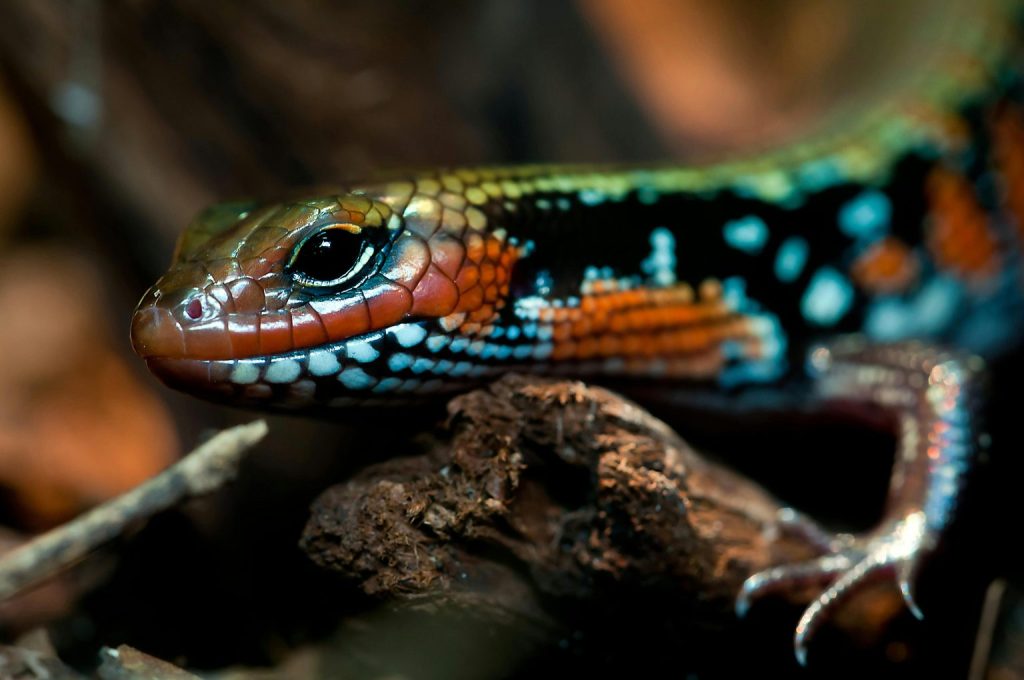
Health and Durability
Fire Skinks are generally hardy and resilient, especially when captive-bred. However, like all reptiles, they can be sensitive to environmental changes and improper care. Here are some key points to keep in mind:
Common Health Issues
- Respiratory Infections: Caused by excessive humidity or poor ventilation.
- Dehydration: Occurs if humidity levels are too low or if they don’t have access to fresh water.
- Parasites: More common in wild-caught individuals, so always opt for captive-bred Fire Skinks when possible.
Preventative Care
- Maintain proper humidity and temperature levels.
- Provide a balanced diet and clean water.
- Regularly clean the enclosure to prevent bacterial growth.
- Monitor their behavior and appetite for any signs of illness.
With proper care, Fire Skinks can live 15-20 years, making them a long-term commitment.
Availability and Cost
Fire Skinks are moderately available in the pet trade, with captive-bred options becoming more common. While wild-caught Fire Skinks are still prevalent, we strongly recommend seeking out captive-bred individuals for their better health and adaptability.
Where to Buy
- Breeders: The best option for finding healthy, captive-bred Fire Skinks.
- Reptile Expos: Great for meeting breeders and seeing a variety of Fire Skinks in person.
- Pet Stores: Less ideal, but some stores may carry Fire Skinks.
Cost
- Fire Skink Price: $30 to $100 for standard individuals, with rare morphs potentially costing more.
- Setup Cost: Around $150 to $300 for a basic enclosure, lighting, and supplies.
Pros and Cons
Pros
- Stunning Appearance: Their vibrant colors make them one of the most visually striking lizards.
- Active and Engaging: Fire Skinks are lively and fun to watch.
- Relatively Low-Maintenance: Their care requirements are manageable for most reptile enthusiasts.
- Long Lifespan: With proper care, they can live 15-20 years.
Cons
- Quick and Slippery: They can be challenging to handle, especially for beginners.
- Moderate Care Requirements: They need specific humidity and temperature conditions.
- Availability: Captive-bred individuals can be harder to find.
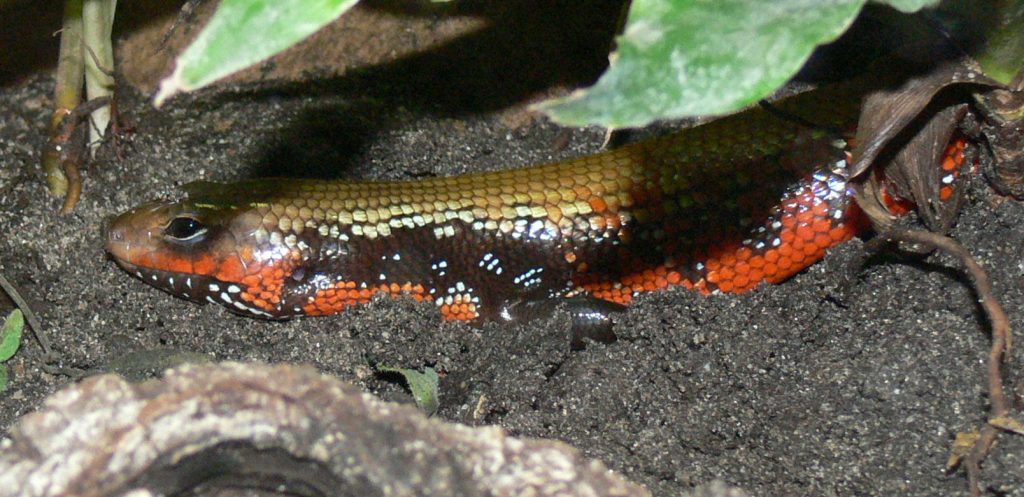
Final Thoughts
Fire Skinks are a fantastic choice for anyone looking to add a vibrant and engaging reptile to their home. Their stunning appearance, active nature, and relatively simple care requirements make them a favorite among reptile enthusiasts. While they do have specific needs, the effort is well worth the reward of having these delightful creatures as part of your family.
If you’re considering a Fire Skink, we highly recommend visiting a breeder or expo to meet them in person. Their individual personalities and stunning appearances are sure to win you over.
Have you owned a Fire Skink? Share your experiences and tips in the comments below! We’d love to hear how you care for your lizard and what makes them special to you.
For more reptile care tips and reviews, stay tuned to our blog and don’t forget to subscribe to our newsletter! 🦎



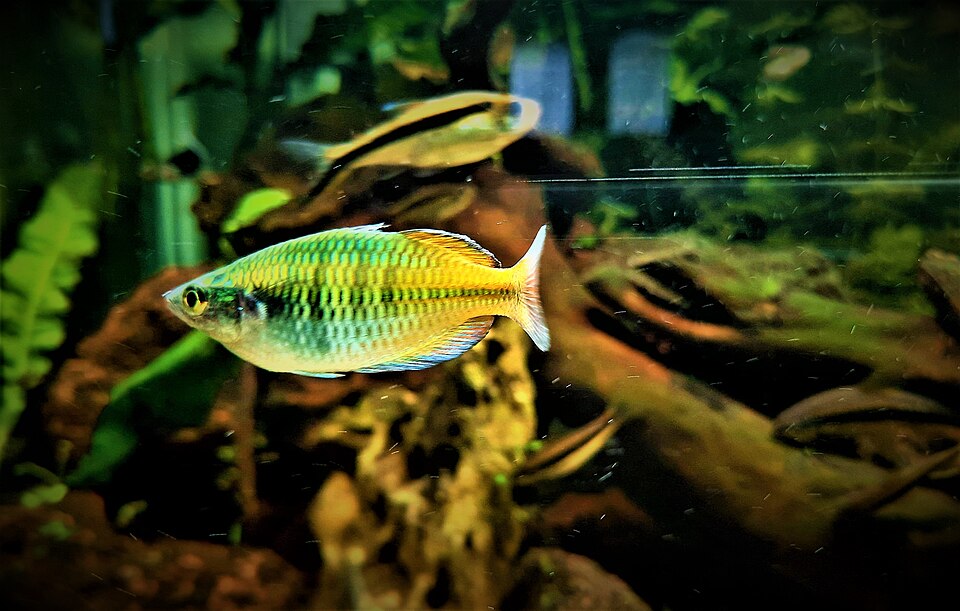
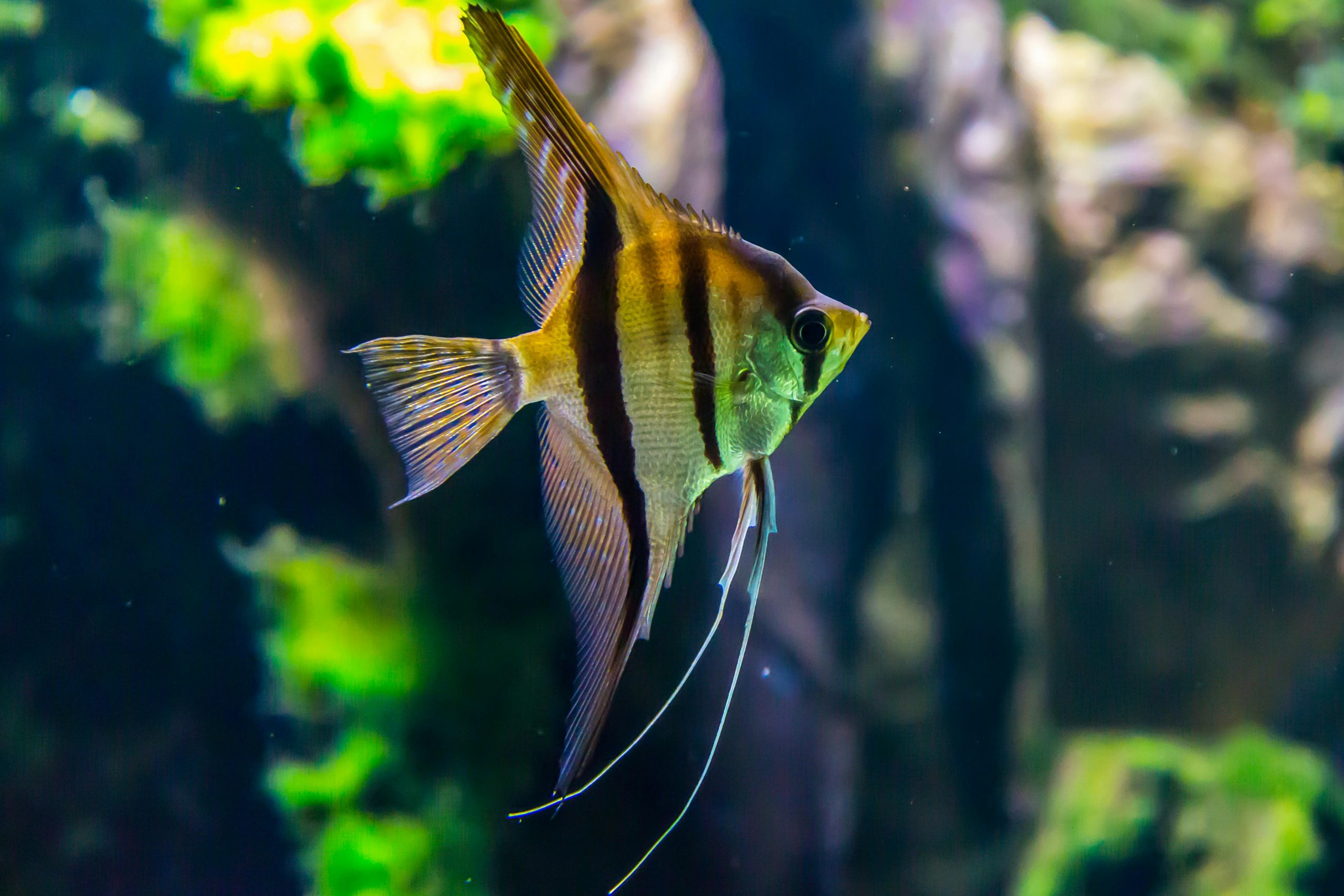
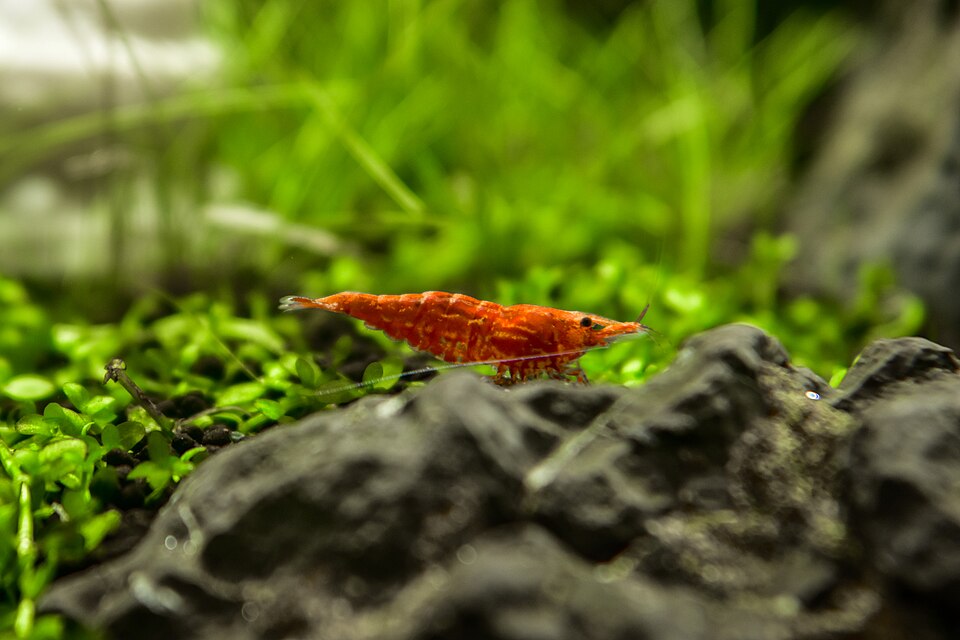

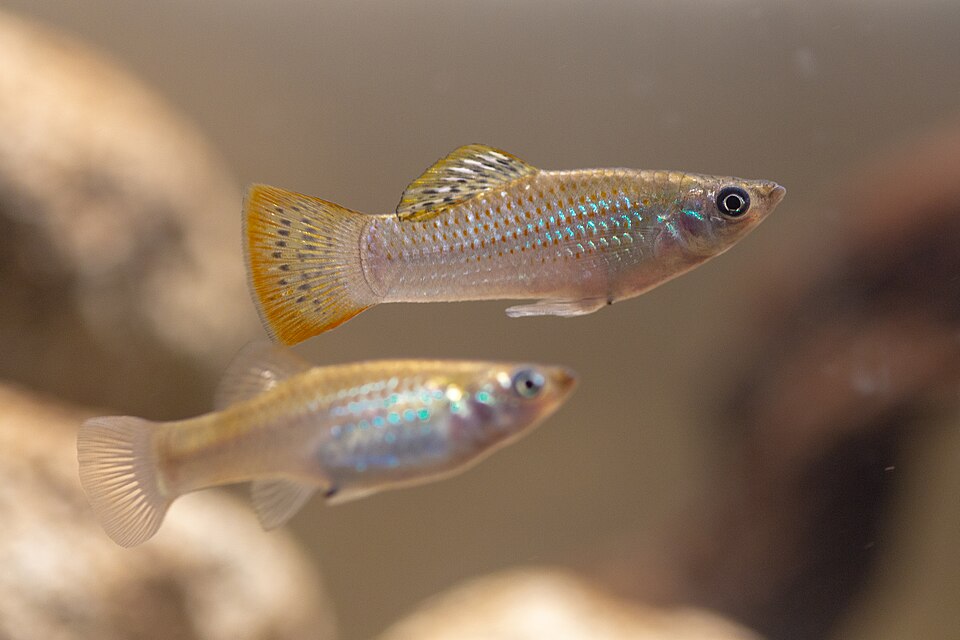
Leave a Reply